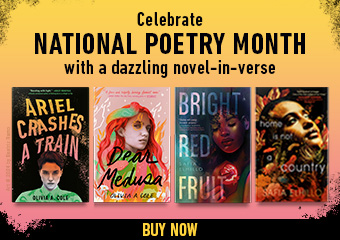All Nonfiction
- Bullying
- Books
- Academic
- Author Interviews
- Celebrity interviews
- College Articles
- College Essays
- Educator of the Year
- Heroes
- Interviews
- Memoir
- Personal Experience
- Sports
- Travel & Culture
All Opinions
- Bullying
- Current Events / Politics
- Discrimination
- Drugs / Alcohol / Smoking
- Entertainment / Celebrities
- Environment
- Love / Relationships
- Movies / Music / TV
- Pop Culture / Trends
- School / College
- Social Issues / Civics
- Spirituality / Religion
- Sports / Hobbies
All Hot Topics
- Bullying
- Community Service
- Environment
- Health
- Letters to the Editor
- Pride & Prejudice
- What Matters
- Back
Summer Guide
- Program Links
- Program Reviews
- Back
College Guide
- College Links
- College Reviews
- College Essays
- College Articles
- Back
The Good in Your Evils
In stories where evils dawn
upon innocent princesses,
where motherly sins and
fairy godmothers come
together like swords and
shields, it is black and white.
Characters are confined
to labels of good and bad,
unknowingly weighed down
by the judgemental eyes
of storytelling mothers
and their young.
Rapunzel. Her sunrise
hair and infectious heart
of gold won the readers,
making her the friend, while
her witch of a mother,
a foe. Stained in her
own blood of sins, Mother
Gothel succumbed to
the might of this
inevitable fate.
Cinderella, who was
blessed with the looks
of an angel, served as a
maid under our pitying
eyes. While step sisters
that made demands
like undying alarms, each
longing for the prince’s love,
lay victim to the biased
nature of grimm’s creations.
But when evil turns good,
who do you choose to love?
Or perhaps they were good
to begin with.
Good even after that one
night, when you left the
front door ajar leaving
just your knocked heels
and the scent of lingering
rum. It led me to your room,
where your stiff satin dress
sags lazily beside your
bed — a corpse of the day’s
endless phone calls and
yells from your tyrannical
boss. Beside this rotting
grave, lay a flowerbed of
crumpled tissues and
scattered papers.
When I entered your
cage of steel that night,
you welcomed me
with your hugs and kisses.
Your touches travel like
bramble, bleeding puddles
of stinging greens and
palm shaped rouge
across my body.
The melodic tune
of your amplified words
reminded me of the mother
you used to be to me.
When your luminescence
burned in the dead of night,
and when your touches
felt like blankets of warmth.
How I yearned for the days
when love did not come at
the expense of security.
When love wasn’t a transaction.
But even when you’ve left me
with your lithified comments
and your caustic caresses,
my ambivalence to you
makes me yearn for the
good I see in your malice.

Similar Articles
JOIN THE DISCUSSION
This article has 0 comments.

The Good In Your Evils expands on the complexity of parent-child relationships. It explores the complexity behind the ambivalence of loving someone even though they have previously hurt you in any way. I was particularly inspired by the syntax of Goblin by Matthew Dickman and how he alluded to fairytales in his story.